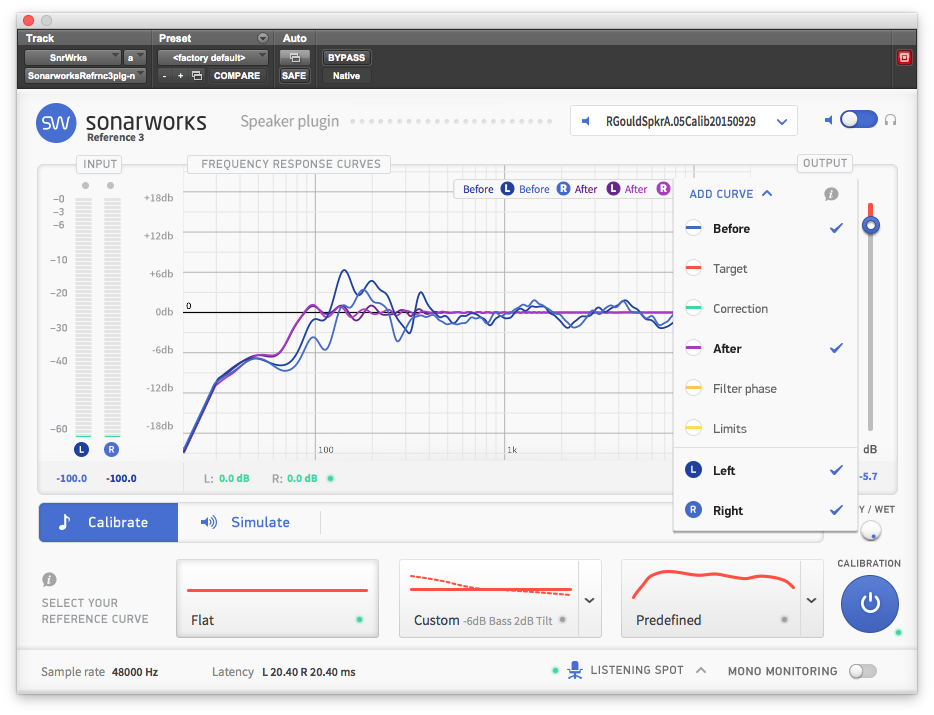

I still felt that Reference 4 made a significant difference to the usability of my Oppo PM-3s, even though the correction curve rarely deviates from the flat by more than 3dB but with even flatter ‘phones such as my Shure SRH1840s, diminishing returns begin to set in. The upshot of this is that if you have a good pair of headphones and you only use the averaged curve, the effects of Sonarworks’ correction are not nearly as startling as if you apply an individual profile to cheap headphones. When Sonarworks measure a specific pair of headphones, they say that the resulting correction curve will be accurate to within ☐.9dB, whereas the averaged profiles have an accuracy of ☓dB. Whereas the ‘optimum’ setting introduces only a tiny amount of phase shift, and that below 100Hz, the zero-latency mode brings significant phase shift across the spectrum, but does allow you to use Reference whilst tracking.

The other major change in version 4 is the addition of a zero-latency mode.
#Sonarworks reference 3 plus
This tally includes pretty much all the current studio models from major manufacturers such as AKG, Audio-Technica, Beyer, Sennheiser, Shure, Sony and Yamaha, plus a good number from the world of hi-fi - noise-cancelling ’phones have even been measured with noise-cancelling both on and off! This figure has grown steadily, and with the launch of Reference 4, the subject of this review, the library now stands at 101 models. When we first covered Reference back in SOS May 2015 (you can read the review online at version 3 was current and the library of averaged files covered only eight models of headphone. If you don’t want to send your headphones to Latvia to be measured, you can simply load up the appropriate averaged file for that particular model. Sonarworks offer the choice of buying Reference with an individual calibration file tailored to a specific pair of headphones and as they’ve measured more and more individual headphones, so they’ve created more and more averaged calibration files. Sonarworks have met this challenge very successfully, and the key factor that makes Reference so useful is their proprietary measurement technique, which really does allow it to compensate for frequency-response variation in a way that we perceive as flat. Coming up with a meaningful and repeatable measurement of the frequency response of an individual pair of headphones is likewise anything but straightforward, given the complex interactions that take place between drivers, earcups, skull and ears.
Headphone listening is intrinsically unnatural, so to start with, it’s not obvious what sort of response we would actually experience as being ‘flat’ or ‘neutral’. This challenge is a lot more complex than it might appear at first. By contrast, headphones remove the acoustic environment as a variable in the monitoring chain, so in principle, even a cheap pair of headphones could be equalised to provide a neutral-sounding monitor system as long as it doesn’t suffer from serious distortion or time-domain anomalies - and as long as it’s possible to fathom out what EQ curve to apply! Nor can EQ address issues that arise from compromises in speaker design, such as port resonance and crossover distortion. Problems with speaker-based monitoring are mostly caused by standing waves and other acoustic issues in the room, and while equalisation might improve matters for a single listening position, it can’t properly solve these problems. In some ways, correcting headphone frequency response through equalisation is arguably more worthwhile than doing the same with loudspeakers. Compared with other products that do the same thing, however, it has a unique selling point, in that it’s intended to correct the frequency response of headphones as well as loudspeakers.

In fact, Reference has even outlasted the Sony headphones that were supplied with the review copy, and which eventually wore out through daily use! For those who haven’t encountered Reference before, it is a system that applies a detailed EQ curve to the output from your DAW in order to compensate for deficiencies in a specific monitoring chain and environment. It’s been nearly three years since I first encountered Sonarworks’ Reference software, and it has been an essential part of my life ever since.
#Sonarworks reference 3 software
Sonarworks’ headphone and monitor correction software has spread its wings outside the DAW, and now encompasses more headphone models than ever.


 0 kommentar(er)
0 kommentar(er)
